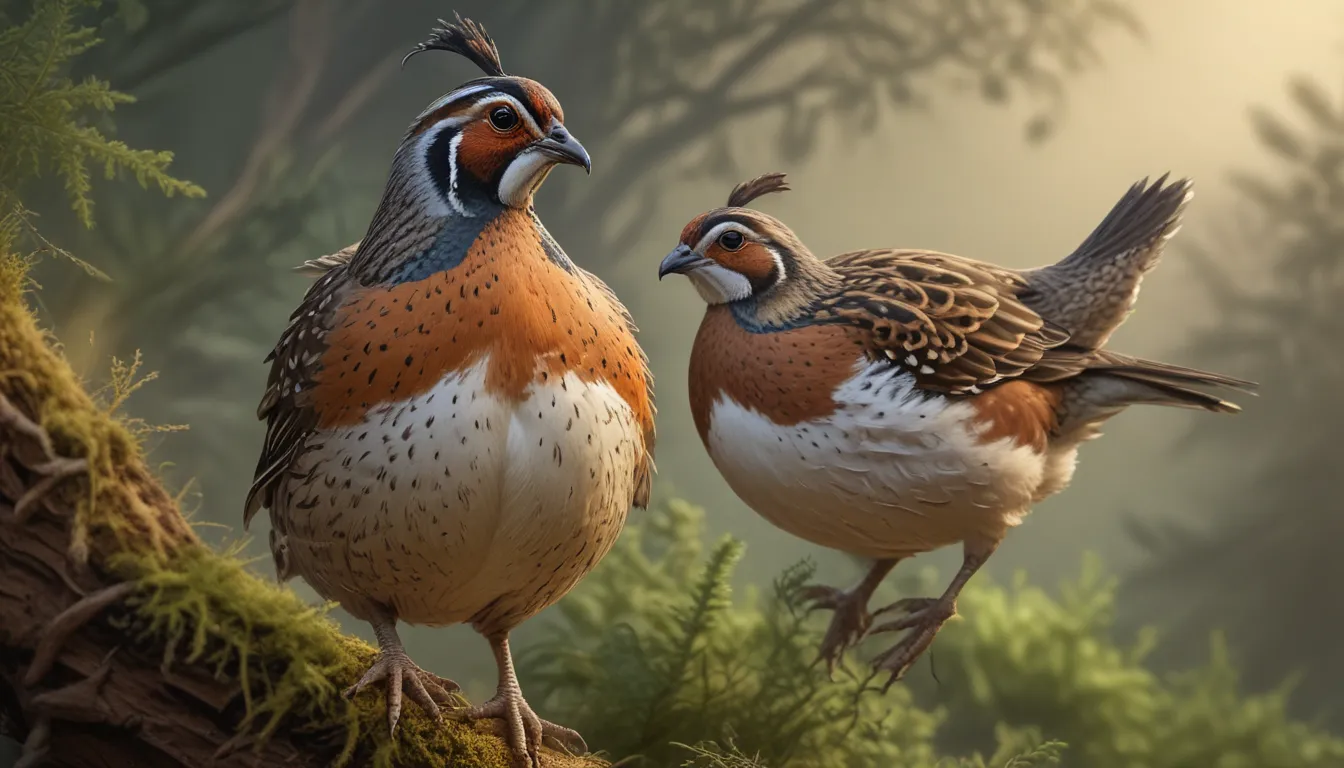The pictures in our articles might not always show exactly what the text is talking about. We use these images to make the article more interesting and eye-catching. They are there to add to the text, but not to replace it or show every detail.
Quail, small game birds with a rich history, are truly remarkable creatures. Whether you are a bird enthusiast or simply appreciate nature's wonders, learning about quail can be a captivating experience. In this article, we will explore 19 fascinating facts about quail that will stir your curiosity and deepen your understanding of these delightful birds.
Understanding Quail: Key Takeaways
- Quail are small, social birds with diverse diets and unique reproductive habits.
- They are essential for the ecosystem and have been domesticated for centuries for their eggs and meat.
- Quail have exceptional camouflage abilities, impressive speeds, and cultural significance.
Discovering Quail: An In-Depth Look
1. Quail are Small Game Birds
Quail, belonging to the family Phasianidae, are widely distributed across continents like North America, Europe, Asia, and Australia. Known for their small size and unique feather patterns, these charming birds captivate many with their appearance.
2. Diversity of Quail Species
With over 130 species of quail, each exhibiting distinct characteristics and habitat preferences, these birds offer a wide range of diversity. Some well-known species include the Bobwhite Quail, California Quail, Gambel’s Quail, and Japanese Quail.
3. Nutrition in Quail Eggs
Quail eggs, though smaller than chicken eggs, pack a nutritional punch with high levels of protein, vitamins, and minerals. Their richness makes them a popular choice in various cuisines worldwide.
4. Vocal Abilities of Quail
Male quails are recognized for their unique mating calls, often described as distinctive "whistling" sounds. These calls help males attract females and establish territory.
5. Social Behavior of Quail
Highly social birds, quail often form groups called coveys. These groups provide protection, mating opportunities, and facilitate foraging activities for the birds.
6. Quail’s Preferential Running
Though quail have the ability to fly, they excel at running due to their short wings. They rely on their strong legs to navigate their surroundings swiftly.
7. Omnivorous Diets of Quail
With an omnivorous diet, quail consume both plant matter and small insects. Their feeding habits include seeds, grains, fruits, and even small reptiles or amphibians.
8. Reproductive Habits of Quail
Males actively engage in courtship and nest-building, while females take on the responsibilities of egg incubation. Nesting sites are well-hidden on the ground to protect the eggs from predators.
9. Adaptability of Quail
Quail exhibit remarkable adaptability to various habitats like grasslands, deserts, forests, and agricultural fields. Their ability to withstand harsh conditions showcases their resilience.
10. Ecological Importance of Quail
As seed dispersers, quail play a vital role in ecosystem balance by spreading seeds across different areas. They also serve as prey for a multitude of predators.
11. Poopularity Among Hunters
Quail hunting is a favored recreational activity, especially in North America. Hunters rely on skill and patience, often using well-trained hunting dogs to locate and flush out these elusive birds.
12. Physical Features of Quail
Characterized by plump bodies, short legs, and unique feather patterns, quail have distinct physical traits that help them blend seamlessly into their surroundings.
13. Impressive Running Speeds
Despite their small size, quail possess impressive running capabilities, reaching speeds of 15-20 miles per hour. This agility aids them in evading predators effectively.
14. Lifespan of Quail
Quail have a relatively short lifespan, averaging around 1 to 2 years in the wild. Some species may live slightly longer in captivity.
15. Monogamous Nature of Quail
Quail typically form monogamous pairs, staying together throughout the breeding season. Their bond strengthens through courtship displays and shared nesting responsibilities.
16. Camouflage Abilities of Quail
Quail's mottled and cryptic plumage enables them to blend seamlessly into their natural surroundings, offering effective protection against predators.
17. Survival Without Water
Quail have evolved to obtain moisture from their diet, allowing them to survive in arid environments where water sources may be scarce.
18. Domestication of Quail
Quail farming has a rich history, dating back to ancient civilizations like the Egyptians, Romans, and Greeks. Domesticated quail are primarily raised for their eggs and meat.
19. Cultural Significance of Quail
Throughout history, quail have held symbolic importance in various cultures. They have been associated with fertility, abundance, courage, and even divination.
Exploring the Enchanting World of Quail
Quail, with their captivating diversity and unique characteristics, offer a world of wonder to explore. Whether you are a devoted bird enthusiast or simply curious about the natural world, delving into the 19 fascinating facts about quail presented in this article will undoubtedly deepen your appreciation for these remarkable birds. Remember, quail not only enrich ecosystems but have also been cherished for their food and companionship by humans for centuries.
So, the next time you encounter a quail or savor quail eggs at a restaurant, you'll have a newfound understanding and admiration for these enchanting birds and their place in our natural world.
Conclusion: Embrace the Charm of Quail
Quails, with their intriguing traits and enchanting presence, continue to captivate our hearts. From their unique plumage to their varied habitats, there is much to learn and marvel at when it comes to these small avian wonders. Explore the 19 captivating facts about quail shared in this article to deepen your understanding and admiration for these delightful birds. Remember, quails not only add beauty to our world but play an essential role in maintaining ecological balance.
FAQs About Quail
1. What are some common species of quail?
Common species of quail include the Northern Bobwhite, California Quail, Gambel’s Quail, and Japanese Quail.
2. What do quails eat?
Quails have a varied diet that includes seeds, grains, insects, and vegetation.
3. How do quails communicate?
Quails communicate through a series of vocalizations, including calls, whistles, and soft clucking sounds.
4. Do quails migrate?
While some quail species are migratory, others prefer to stay in their habitats year-round.
5. How many eggs does a quail lay?
Quails are prolific egg layers and can lay around 8-12 eggs on average, depending on the species.
6. Are quails monogamous?
Many quail species form long-term pair bonds during the breeding season, exhibiting socially monogamous behavior.
7. Can quails fly?
Yes, quails have the ability to fly, but they primarily rely on their powerful legs for ground-based locomotion.
Embark on a Journey of Discovery
Enthusiasts of quail and curious readers alike can delve deeper into the captivating world of these remarkable birds through our related articles. Explore the unique traits of the Georgia Giant Bobwhite Quail, a distinct subspecies with fascinating characteristics. Discover Quaile Falls, a hidden gem boasting a rich history and breathtaking beauty. Expand your knowledge beyond quail and delve into the diverse and enthralling realm of fowl, exploring their behaviors and ecological significance. Embark on a journey of discovery with these engaging reads!
Quail enthusiasts and curious readers find valuable insights and engaging content on our site, contributed by users like you. Our dedicated editors ensure credibility and accuracy in every fact shared. Explore the world of quail with trust in our commitment to quality and authenticity as you expand your knowledge and appreciation for these charming birds.






